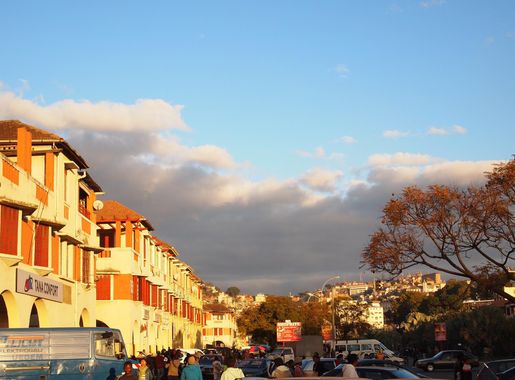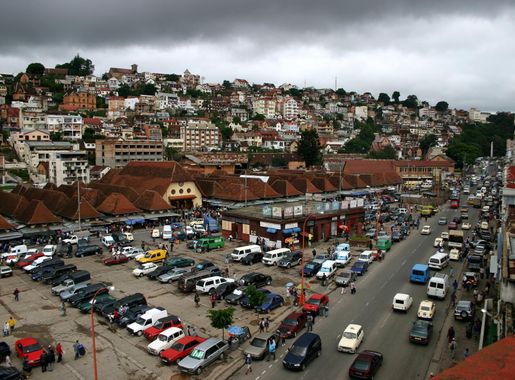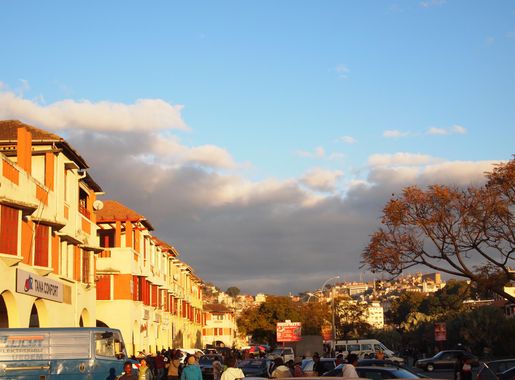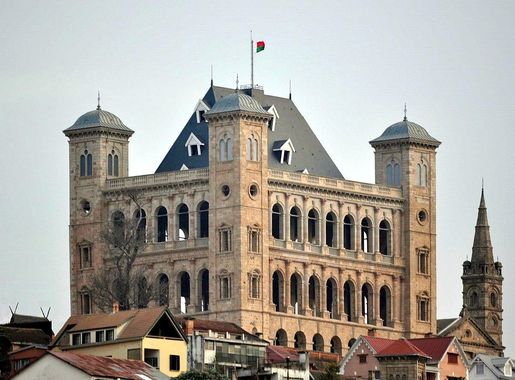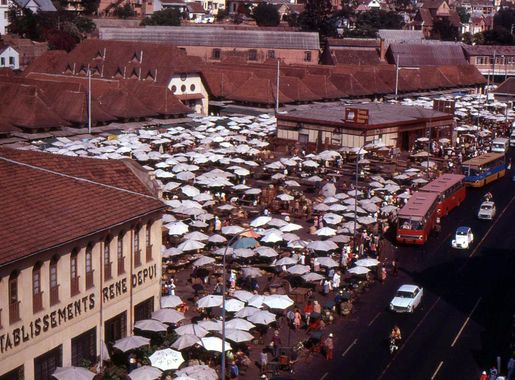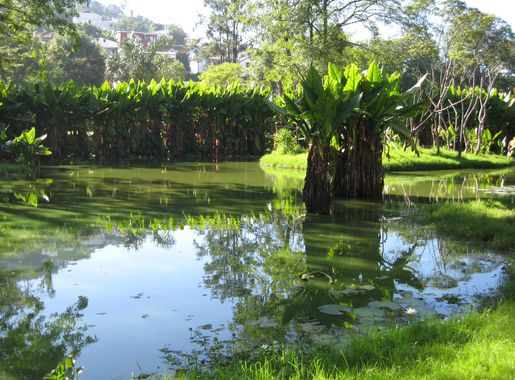
Isoraka: The Heartbeat of Antananarivo
Discover Isoraka: A vibrant neighborhood in Antananarivo blending colonial charm, cultural hotspots, and modern flair, perfect for every traveler.
Isoraka, nestled in the vibrant capital city of Antananarivo, is a neighborhood that seamlessly blends history, culture, and modernity. As you wander through its charming streets, you'll find a mix of colonial-era architecture and contemporary buildings, reflecting the rich history and dynamic present of Madagascar's capital. The neighborhood is known for its lively atmosphere, with bustling markets, quaint cafes, and a variety of restaurants offering both local and international cuisine. Isoraka is a hotspot for art and culture enthusiasts, boasting numerous galleries, theaters, and cultural centers. The nearby Analakely Market is a must-visit for those looking to experience the local life and shop for unique souvenirs. Isoraka's central location makes it an ideal base for exploring the rest of Antananarivo. From here, you can easily access historical landmarks, such as the Rova of Antananarivo, and enjoy panoramic views of the city from the hilltop. Whether you're a history buff, a foodie, or an art lover, Isoraka has something to offer for every type of traveler.
Local tips in Isoraka
- Visit the Analakely Market early in the morning to experience the bustling local life and get the freshest produce.
- Wear comfortable shoes, as the streets can be steep and uneven in some areas.
- Try the local Malagasy dishes at one of the neighborhood's traditional restaurants for an authentic culinary experience.
- Keep an eye on your belongings, especially in crowded areas, to avoid pickpocketing.
- Take a guided tour to learn about the rich history and significance of the colonial buildings in Isoraka.
Isoraka: The Heartbeat of Antananarivo
Isoraka, nestled in the vibrant capital city of Antananarivo, is a neighborhood that seamlessly blends history, culture, and modernity. As you wander through its charming streets, you'll find a mix of colonial-era architecture and contemporary buildings, reflecting the rich history and dynamic present of Madagascar's capital. The neighborhood is known for its lively atmosphere, with bustling markets, quaint cafes, and a variety of restaurants offering both local and international cuisine. Isoraka is a hotspot for art and culture enthusiasts, boasting numerous galleries, theaters, and cultural centers. The nearby Analakely Market is a must-visit for those looking to experience the local life and shop for unique souvenirs. Isoraka's central location makes it an ideal base for exploring the rest of Antananarivo. From here, you can easily access historical landmarks, such as the Rova of Antananarivo, and enjoy panoramic views of the city from the hilltop. Whether you're a history buff, a foodie, or an art lover, Isoraka has something to offer for every type of traveler.
Iconic landmarks you can’t miss
Tsimbazaza Zoo and Botanical Gardens
Experience Madagascar's incredible wildlife and stunning botanical gardens at Tsimbazaza Zoo in Antananarivo.
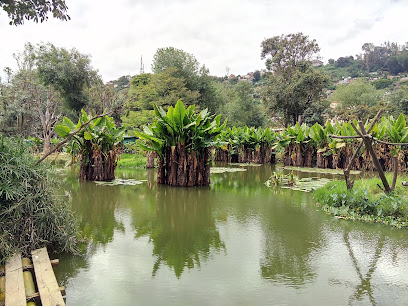
Queen's Palace
Explore the majestic Queen's Palace in Antananarivo, a heritage museum showcasing Madagascar's royal history and stunning architectural beauty.
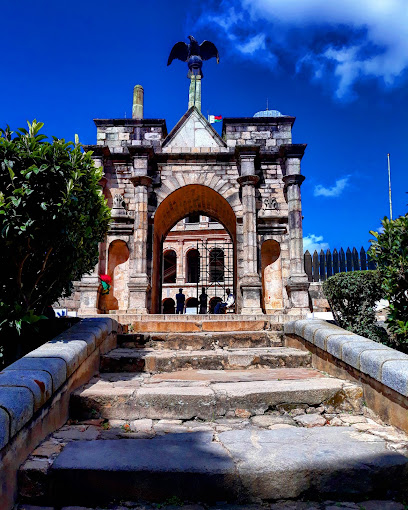
Analakely Market
Explore Analakely Market, Antananarivo's bustling marketplace filled with local crafts, fresh produce, and a vibrant atmosphere that captures Madagascar's essence.
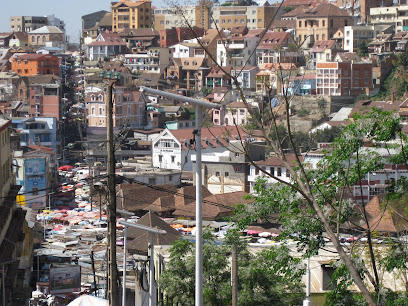
Lisy Art Gallery
Discover the vibrant art scene at Lisy Art Gallery in Antananarivo, showcasing local talent and cultural richness through stunning exhibitions.
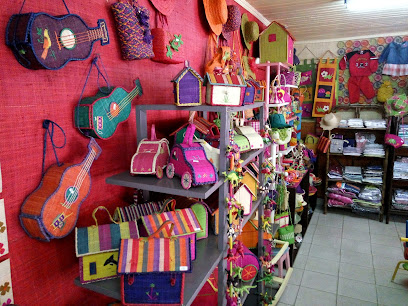
Madagascar Photography Museum
Explore the captivating world of Madagascar through stunning photography at the Photography Museum in Antananarivo.
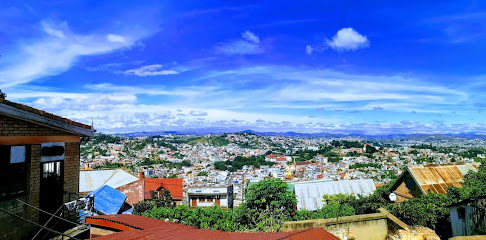
Cathedrale catholique d Andohalo
Discover the enchanting Cathedrale catholique d Andohalo, a stunning blend of history and spirituality in the heart of Antananarivo.
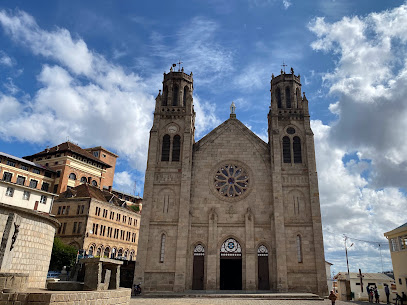
Andafiavaratra Palace
Explore Andafiavaratra Palace, a historic museum in Antananarivo that unveils the royal legacy and stunning architecture of Madagascar's past.
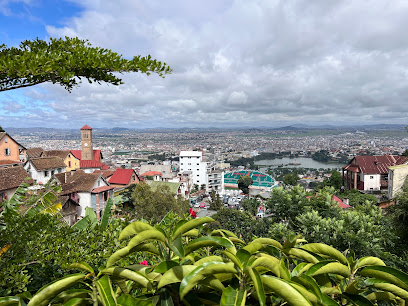
Tsarasaotra Park
Explore the serene beauty of Tsarasaotra Park in Antananarivo, a lush haven for nature lovers and a perfect escape from city life.
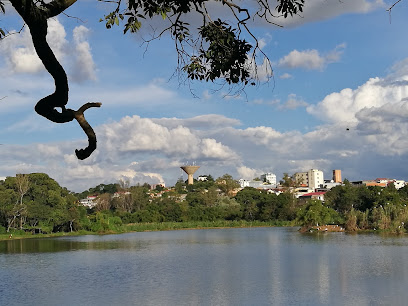
Is´art Galerie
Discover the vibrant art scene of Madagascar at Is'art Galerie, a cultural gem in Antananarivo showcasing local artistry and creativity.
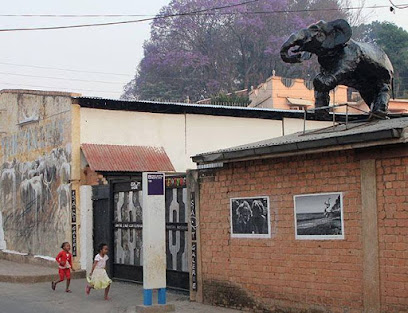
Pirates Museum
Explore the thrilling world of piracy at Antananarivo's Pirates Museum, where history and adventure come together in an unforgettable experience.
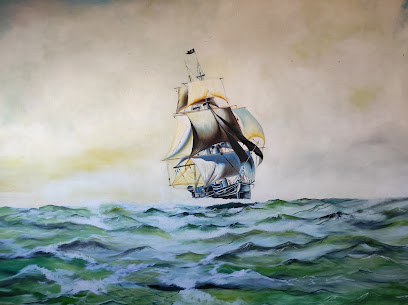
TEND M Isoraka
Discover the authentic flavors of Madagascar at TEND M Isoraka, a culinary gem in the heart of Antananarivo.
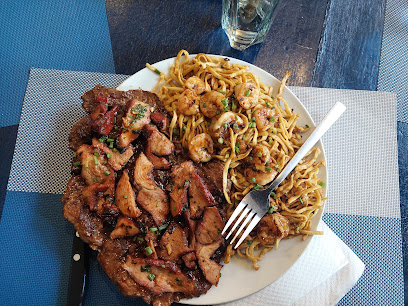
EKAR Faravohitra
Explore the serene beauty and spiritual significance of EKAR Faravohitra, a must-see Catholic church in the heart of Antananarivo, Madagascar.
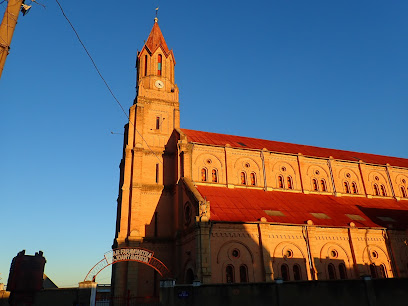
Maison de Jean Laborde
Explore the architectural beauty and rich history of Maison de Jean Laborde in Antananarivo, a must-visit landmark for every traveler.
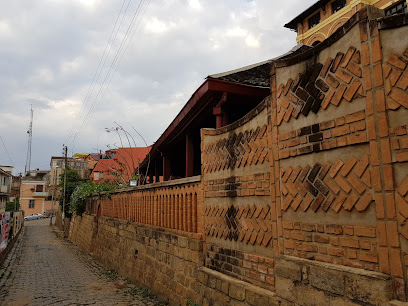
Ambohitsorohitra Palace
Explore the majestic Ambohitsorohitra Palace, a historical landmark in Antananarivo, and immerse yourself in Madagascar's royal heritage.
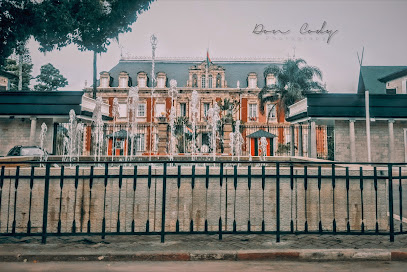
Isoraka
Explore Isoraka in Antananarivo: A vibrant district filled with local crafts, delicious Malagasy cuisine, and a rich cultural tapestry waiting to be discovered.

Unmissable attractions to see
Tsimbazaza Zoo and Botanical Gardens
Discover the unique wildlife and stunning botanical diversity at Tsimbazaza Zoo and Botanical Gardens in Antananarivo, Madagascar’s enchanting green escape.
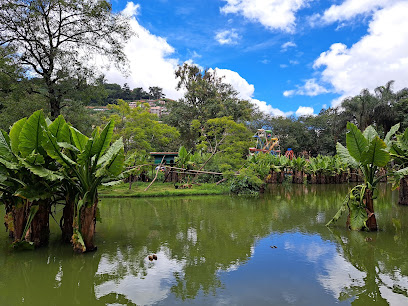
Queen's Palace
Explore the cultural treasures of Madagascar at the Queen's Palace, a heritage museum steeped in royal history and architectural beauty.
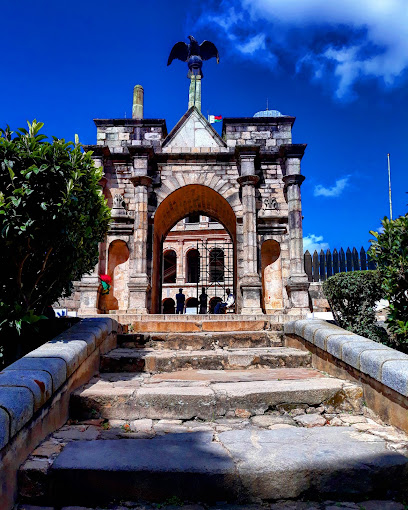
Analakely Market
Discover the lively Analakely Market in Antananarivo, where local culture, crafts, and cuisine create an unforgettable experience for every traveler.
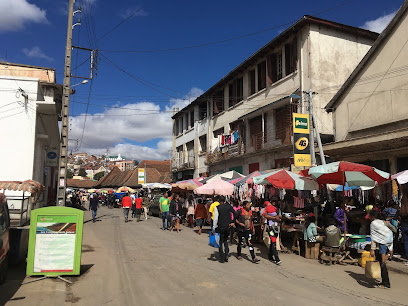
Cathedrale catholique d Andohalo
Discover the historical and architectural splendor of the Cathedrale catholique d Andohalo in the vibrant city of Antananarivo, Madagascar.
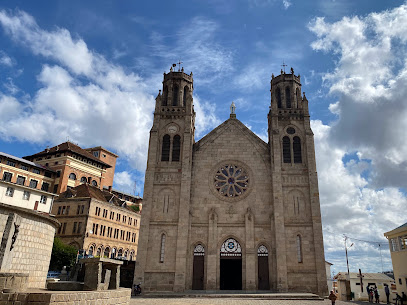
Andafiavaratra Palace
Explore Andafiavaratra Palace in Antananarivo, a historical museum showcasing Madagascar's royal heritage and stunning architectural beauty.
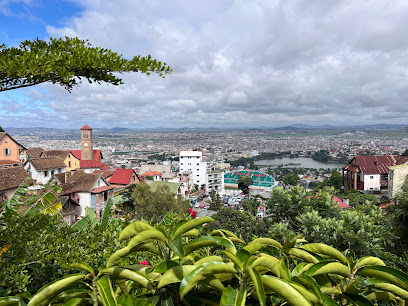
Tsarasaotra Park
Explore the tranquility of Tsarasaotra Park, an urban oasis in Antananarivo, teeming with natural beauty and diverse wildlife.
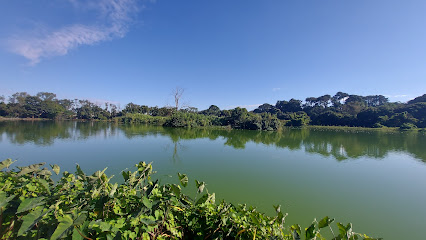
Is´art Galerie
Discover the heart of Malagasy creativity at Is'art Galerie, showcasing contemporary art and culture in the vibrant city of Antananarivo.
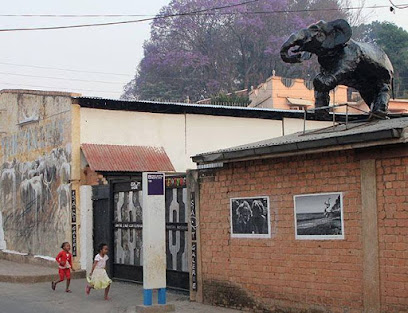
Pirates Museum
Explore the intriguing world of piracy at the Pirates Museum in Antananarivo, where adventure, history, and captivating stories await.
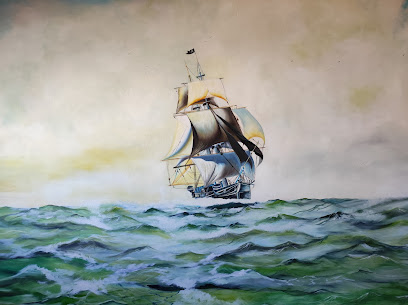
Viewpoint (Staircase leading up to the cathedral)
Experience stunning views of Antananarivo from this scenic viewpoint leading up to the cathedral, capturing the city's vibrant culture and beauty.
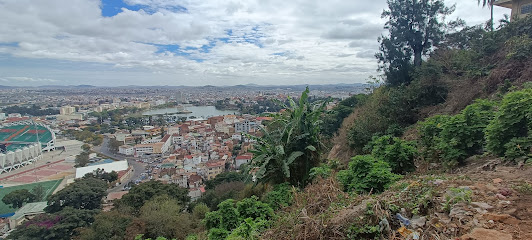
Essential places to dine
Le Rossini
Experience authentic Italian cuisine at Le Rossini in Antananarivo - where every dish tells a story.
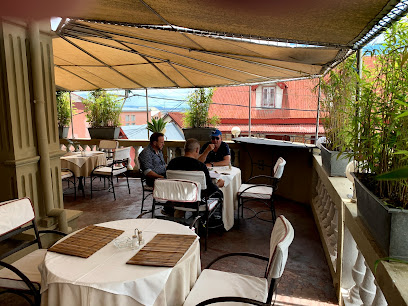
La petite Brasserie
Discover the rich flavors of Madagascar at La Petite Brasserie in Antananarivo - where culinary tradition meets modern dining.
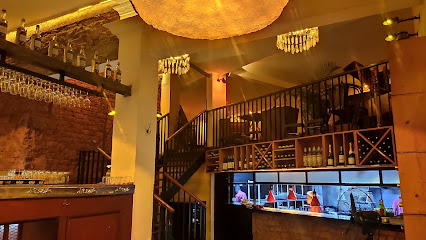
COIN DU FOIE GRAS Isoraka
Discover exquisite Malagasy and French cuisine at Coin du Foie Gras in Antananarivo's vibrant Isoraka neighborhood.
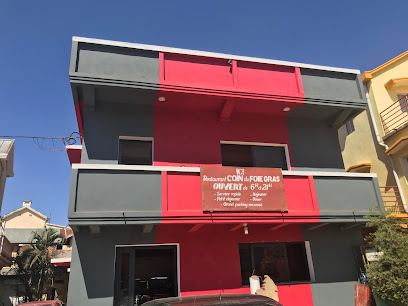
TEND M Isoraka
Experience authentic Malagasy cuisine at TEND M Isoraka in Antananarivo - where every dish tells a story.
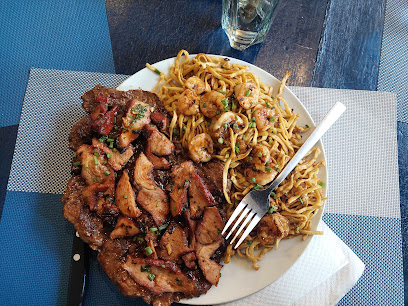
Le Pourquoi Pas
Experience the rich flavors of Madagascar at Le Pourquoi Pas - where every meal tells a story.
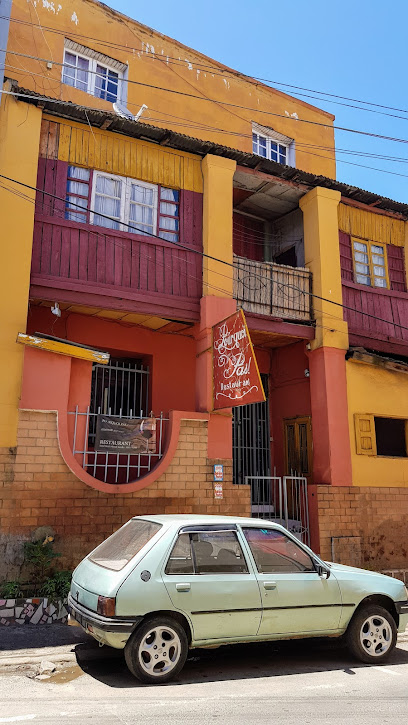
Restaurant Mandala
Experience exquisite Malagasy cuisine in Antananarivo at Restaurant Mandala, where every dish tells a story of tradition and flavor.
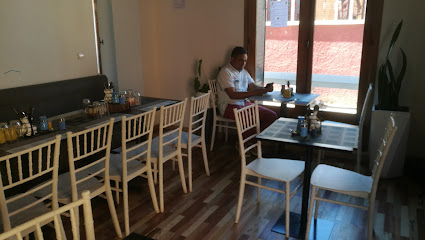
Le Regal Isoraka
Experience the authentic flavors of Madagascar at Le Regal Isoraka in Antananarivo - where culinary tradition meets modern dining.
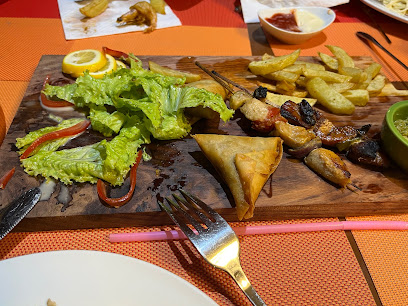
Kitchen Garden Café
Discover fresh flavors at Kitchen Garden Café in Antananarivo - a delightful blend of local cuisine and sustainable practices.
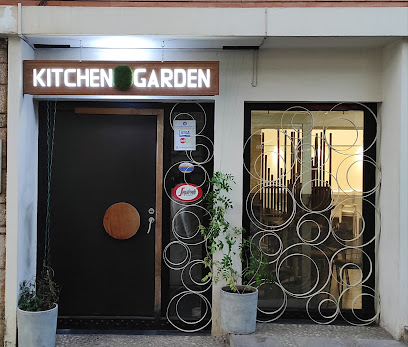
SA-GASY restau
Discover authentic Malagasy cuisine at SA-GASY restau in Antananarivo - perfect for families seeking delicious meals in a vibrant setting.

L'atelier culinaire
Experience the rich flavors of Madagascar at L'atelier culinaire, where traditional meets modern cuisine in a charming setting.
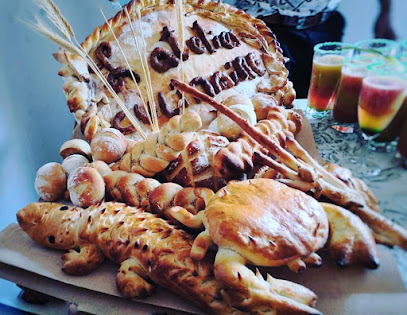
Markets, malls and hidden boutiques
Akoor Digue
Discover the vibrant shopping, dining, and cultural experiences at Akoor Digue in Antananarivo, Madagascar.
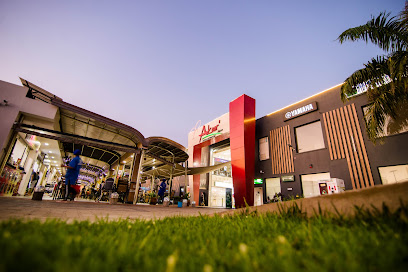
Kudéta Shop
Explore Kudéta Shop in Antananarivo for unique Malagasy souvenirs that showcase the island's rich culture and craftsmanship.
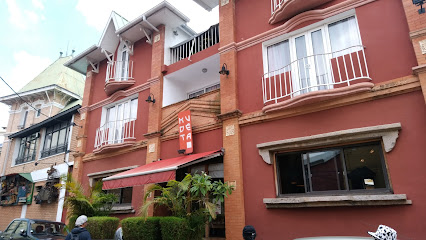
La city Ivandry
Discover the essence of Antananarivo at La City Ivandry, a bustling shopping mall featuring local and international brands, dining, and entertainment.
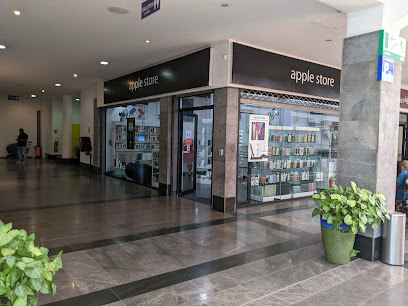
Digue Market
Discover the vibrant Digue Market in Antananarivo, where local culture, delicious cuisine, and unique crafts come together for an unforgettable shopping experience.
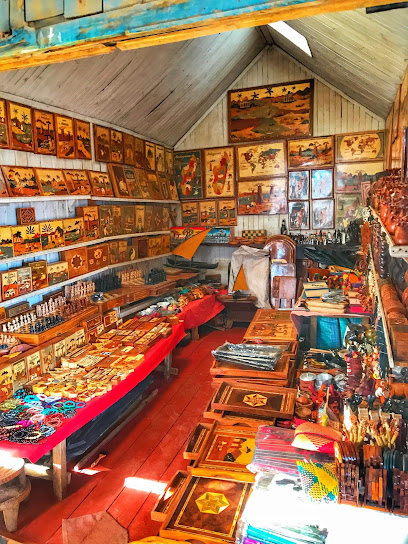
Ô Chaud & Tia Perso
Explore the heart of Antananarivo at Ô Chaud & Tia Perso, where unique gifts and local crafts bring Madagascar's culture to life.
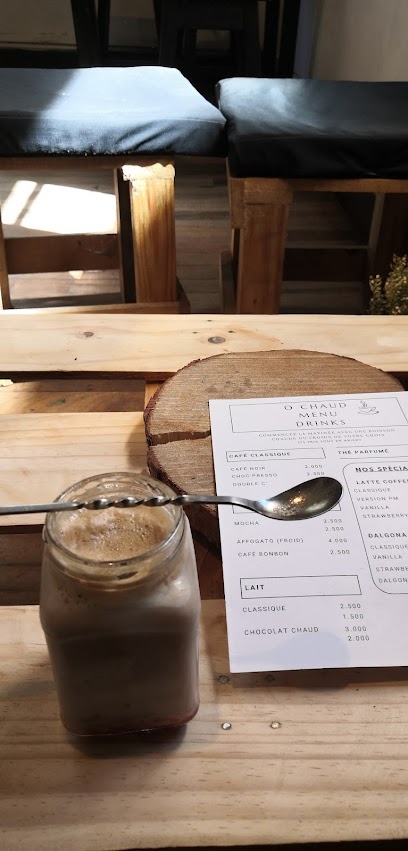
Akany Concept Store
Explore the heart of Madagascar's craftsmanship at Akany Concept Store—where culture meets creativity in every unique item.
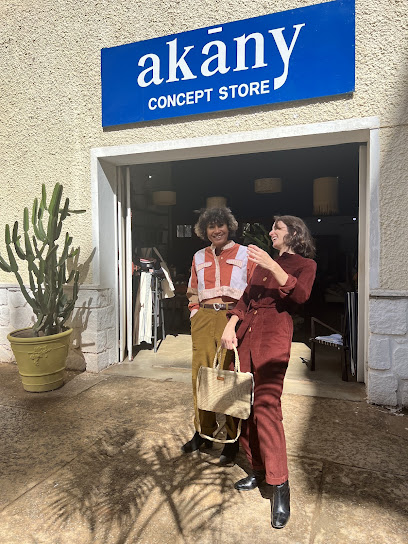
Artiflora Madagascar
Discover the vibrant artistry of Madagascar at Artiflora - a gift shop showcasing local craftsmanship and unique souvenirs.
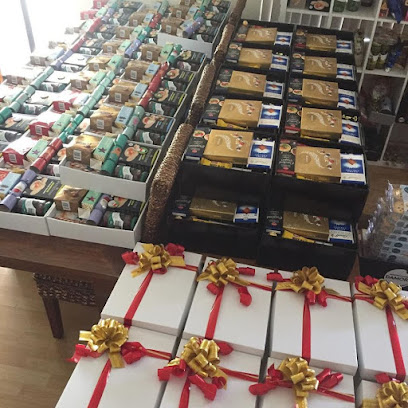
Fait Maison - boutique d'artisanat malgache antananarivo
Discover the essence of Madagascar at Fait Maison, a boutique offering exquisite handmade leather goods in the heart of Antananarivo.

LET'S LIVE
Explore Let's Live in Antananarivo for a unique shopping experience featuring authentic Malagasy crafts and cultural treasures.
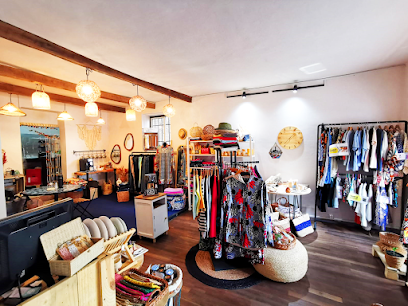
Bijouterie Krishna
Explore Bijouterie Krishna in Antananarivo for exquisite jewelry, leather goods, watches, and pens that embody Madagascar's rich craftsmanship.
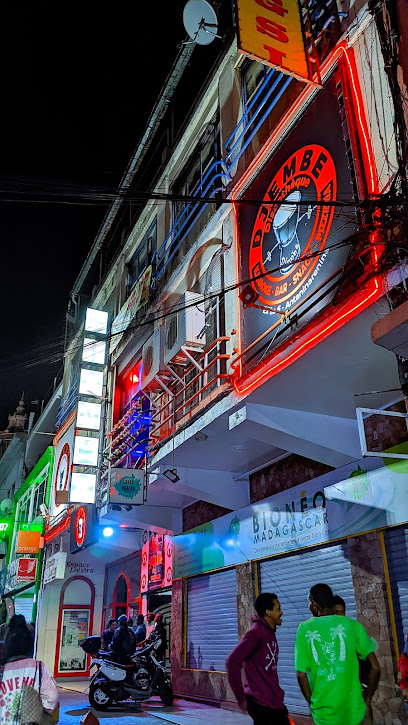
Essential bars & hidden hideouts
No Comment BAR
Experience the vibrant nightlife and delightful tapas at No Comment BAR, a must-visit destination in Antananarivo, Madagascar.
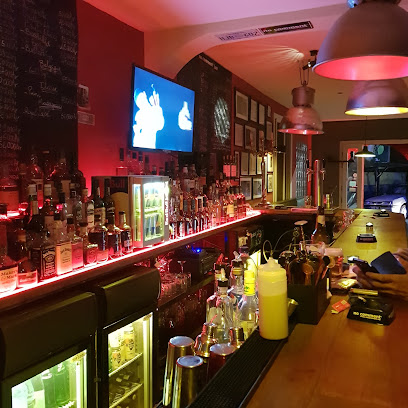
Quantum Isoraka - Le Hoggar
Discover Quantum Isoraka - Le Hoggar, a vibrant bar and dining spot in Isoraka, Madagascar, offering halal cuisine and a cozy co-working atmosphere.
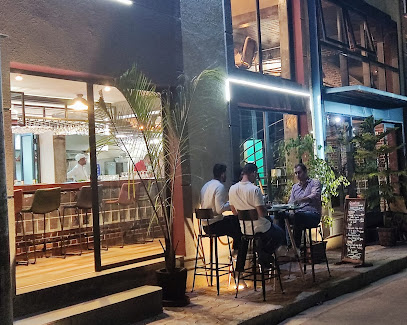
Old 7 bar
Discover Antananarivo's nightlife at Old 7 Bar, a vibrant spot for cocktails, music, and unforgettable social experiences.
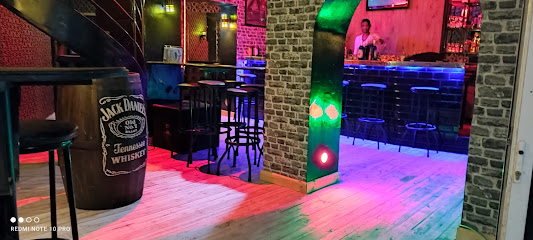
Le Hub
Discover the essence of Madagascar at Le Hub, a vibrant bar and restaurant in Antananarivo offering local cuisine and a lively atmosphere.
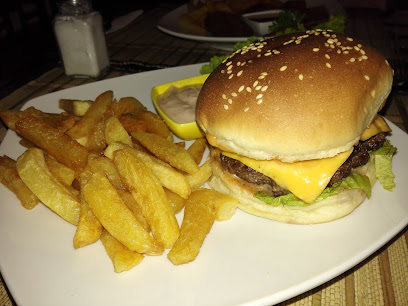
Manson by Marco
Discover the vibrant nightlife and local flavors at Manson by Marco, a lively pub in the heart of Antananarivo, Madagascar.
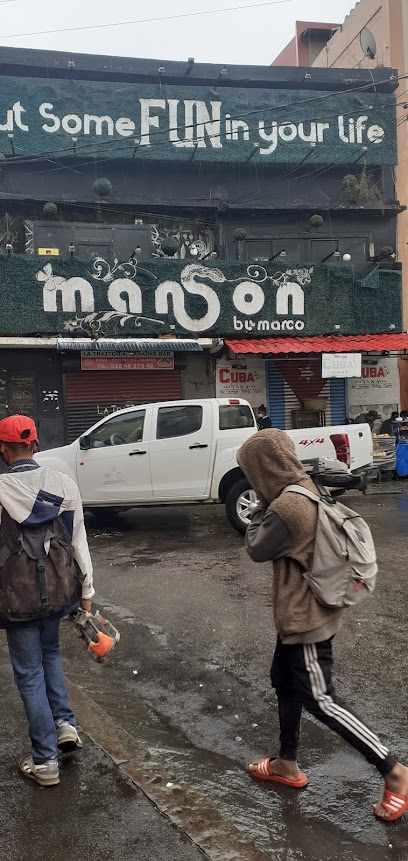
Le Bouddha-Bar antananarivo
Discover the tranquil vibe of Le Bouddha-Bar in Antananarivo, where modern lounge culture meets the warmth of Malagasy hospitality.
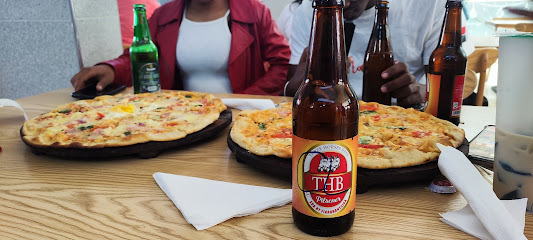
Chez Papa !
Discover the vibrant nightlife at Chez Papa!, a charming bar in Isoraka, Antananarivo, where locals and tourists come together to enjoy great drinks and good vibes.
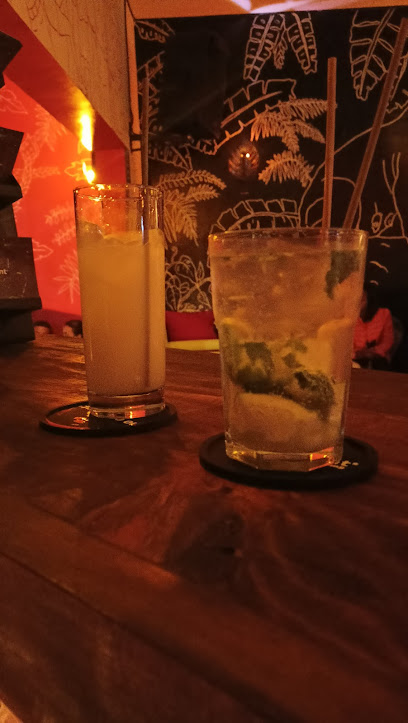
World Citizen Bar
Discover the warmth of global cultures at World Citizen Bar, a charming retreat in Antananarivo's vibrant Isoraka neighborhood.

Le Cellier d'Isoraka
Discover the charm of Le Cellier d'Isoraka, Antananarivo's premier wine bar, offering an exquisite selection of local and international wines in a cozy atmosphere.

Arinay
Discover the vibrant nightlife of Antananarivo at Arinay, a lively bar offering an array of drinks and a welcoming atmosphere.

Local Phrases
-
- HelloSalama
[sah-lah-mah] - GoodbyeVeloma
[veh-loh-mah] - YesEny
[eh-ny] - NoTsia
[tsi-ah] - Please/You're welcomeAzafady
[ah-zah-fah-dee] - Thank youMisaotra
[mee-sah-oh-trah] - Excuse me/SorryAzafady
[ah-zah-fah-dee] - How are you?Manao ahoana ianao?
[mah-nah-oh-nah ee-ah-nah-oh] - Fine. And you?Tsara. Ianao?
[tsah-rah ee-ah-nah-oh] - Do you speak English?Mahay milaza Anglisy ianao?
[mah-hahy mee-lah-zah ahng-lee-see ee-ah-nah-oh] - I don't understandTsy fantatro
[tsih fahn-tah-tro]
- HelloSalama
-
- I'd like to see the menu, pleaseMila anarana ny menio, azafady
[mee-lah ah-nah-rah-nah nee meh-nyoh, ah-zah-fah-dee] - I don't eat meatTsy mihinana hena
[tsih mee-hee-nah heh-nah] - Cheers!Mazotoa!
[mah-zoh-toh-ah] - I would like to pay, pleaseMila mamono, azafady
[mee-lah mah-moh-noh, ah-zah-fah-dee]
- I'd like to see the menu, pleaseMila anarana ny menio, azafady
-
- Help!Fanampiana!
[fah-nahm-pee-ah-nah] - Go away!Miala!
[mee-ah-lah] - Call the Police!Mangataka polisy!
[mahng-gah-tah-kah poh-lee-see] - Call a doctor!Mangataka dokotera!
[mahng-gah-tah-kah doh-koh-teh-rah] - I'm lostEfa nitsangana aho
[eh-fah nee-tsahng-gah-nah ah-hoh] - I'm illMandeha ratsy aho
[mah-ndeh-hah raht-see ah-hoh]
- Help!Fanampiana!
-
- I'd like to buy...Mila mivarotra...
[mee-lah mee-vah-roh-trah] - I'm just lookingMijery fotsiny
[mee-jeh-ree foh-tsee-ny] - How much is it?Ohatrinona izany?
[oh-ha-tree-noh-nah ee-zahn-y] - That's too expensiveMahafinaritra be izany
[mah-hah-fee-nah-ree-trah beh ee-zahn-y] - Can you lower the price?Afaka mampiditra ny vidiny?
[ah-fah-kah mahm-pee-dee-trah nee vee-dee-ny]
- I'd like to buy...Mila mivarotra...
-
- What time is it?Inona no lasa?
[ee-noh-nah noh lah-sah] - It's one o'clockIrery
[ee-reh] - Half past (10)Efatra sasany
[eh-fah-trah sah-sahn-y] - MorningMaraina
[mah-rah-ee-nah] - AfternoonHariva
[hah-ree-vah] - EveningAlina
[ah-lee-nah] - YesterdayOmaly
[oh-mah-ly] - TodayAnio
[ah-nyoh] - TomorrowRahampitso
[rah-hahm-pee-tsoh] - 1Iray
[ee-ry] - 2Roa
[roh] - 3Telo
[teh-loh] - 4Efatra
[eh-fah-trah] - 5Dimy
[dee-mee] - 6Enina
[eh-nee-nah] - 7Fito
[fee-toh] - 8Valo
[vah-loh] - 9Sivy
[see-vy] - 10Folo
[foh-loh]
- What time is it?Inona no lasa?
-
- Where's a/the...?Aiza ny...
[ah-ee-zah nee] - What's the address?Inona ny adiresy?
[ee-noh-nah nee ah-dee-reh-see] - Can you show me (on the map)?Afaka manapitra ahy (amin'ny sarita)?
[ah-fah-kah mah-nah-pee-trah ah-hee (ah-meen-nee sah-ree-tah)] - When's the next (bus)?Amin'ny andron'ny mpivarotra (volana) izay?
[ah-meen-nee ah-ndroh-ny mp-ee-vah-roh-trah (voh-lah-nah) ee-zah] - A ticket (to ....)Famonoana (ho ...)
[fah-moh-noh-ah-nah (hoh)]
- Where's a/the...?Aiza ny...
History of Isoraka
-
Isoraka's history is intertwined with the founding of Antananarivo in the early 17th century. As the capital of the Merina Kingdom, Antananarivo became a melting pot of cultures and traditions, with Isoraka emerging as a significant neighborhood due to its proximity to the royal palace and administrative centers.
-
During the French colonial period in the late 19th and early 20th centuries, Isoraka underwent significant urban development. The French influence introduced new architectural styles, seen in the colonial buildings that still define the neighborhood today. This era marked the beginning of modern urban planning in Antananarivo, with Isoraka becoming a bustling area for commerce and administration.
-
Isoraka has historically been a hub for diverse cultural exchanges. The neighborhood is home to a mix of ethnic groups, including the Merina and other Malagasy communities, as well as Indian and Chinese immigrants. This diversity is reflected in the local cuisine, festivals, and daily life, making Isoraka a vibrant example of Madagascar's multiculturalism.
-
The 20th century brought political challenges to Isoraka, particularly during the periods of unrest and revolution. Notably, the 1972 uprising against the government led to significant changes in the political landscape of Madagascar. Isoraka, being close to the heart of political activity in Antananarivo, witnessed protests and gatherings that shaped the nation's history.
-
Today, Isoraka is known for its blend of historical significance and modern urban life. The neighborhood features a mix of traditional markets, contemporary cafes, and cultural institutions. The ongoing preservation of historical sites, alongside urban development, illustrates the neighborhood's dynamic character within the broader context of Antananarivo's evolution.
Isoraka Essentials
-
Isoraka is centrally located in Antananarivo, making it easily accessible from other neighborhoods. You can reach Isoraka via taxi-brousse (shared taxi) from the central bus station, or take a private taxi from areas like Analakely or Antsiranana. For those arriving at Ivato International Airport, a taxi ride to Isoraka typically takes about 30-45 minutes, depending on traffic.
-
Isoraka is a compact neighborhood, making it ideal for walking. However, for longer distances, you can use the local taxi-brousse services or hire a private taxi. Bicycles are also popular among locals; consider renting one to explore the area at your own pace. Public buses are available but are less commonly used by tourists due to language barriers.
-
Isoraka is generally safe for tourists, but like any urban area, caution is advisable. Be particularly wary of pickpockets in crowded areas and avoid walking alone at night, especially in poorly lit streets. Areas to avoid include the outskirts of Isoraka, where petty crime may occur. Always stay vigilant and keep your belongings secure.
-
In case of emergency, dial 117 for police assistance or 15 for medical emergencies. Local hospitals and clinics are available in Isoraka, including the Hôpital Joseph Ravoahangy Andrianavalona. It is advisable to have travel insurance that covers emergencies. For minor health issues, local pharmacies can provide over-the-counter medications.
-
Fashion: Do dress modestly, especially when visiting local markets or religious sites. Don't wear revealing clothing. Religion: Do respect local customs and traditions. Always ask permission before taking photographs of people. Public Transport: Do be polite and offer your seat to the elderly. Don't eat or drink on public transport. Greetings: Do greet locals with a friendly 'Salama!' (Hello). Don't interrupt conversations or be overly loud. Eating & Drinking: Do try local dishes and accept food offerings. Don't waste food or refuse hospitality, as it may be considered rude.
-
To experience Isoraka like a local, visit the daily markets and sample street food, such as 'mofo gasy' (Malagasy pancakes) or 'koba' (rice and peanut cake). Engage with local vendors to learn about their products and culture. Consider attending local events or festivals for an authentic experience. Also, take time to explore the nearby parks and historical sites, which are often overlooked by tourists.
Trending Landmarks in Isoraka
-
Tsimbazaza Zoo and Botanical Gardens
-
Queen's Palace
-
Analakely Market
-
Lisy Art Gallery
-
Madagascar Photography Museum
-
Cathedrale catholique d Andohalo
-
Andafiavaratra Palace
-
Tsarasaotra Park
-
Is´art Galerie
-
Pirates Museum
-
TEND M Isoraka
-
EKAR Faravohitra
-
Maison de Jean Laborde
-
Ambohitsorohitra Palace
-
Isoraka
Nearby Cities to Isoraka
-
Things To Do in Andasibe
-
Things To Do in Antsirabe
-
Things To Do in Toamasina
-
Things To Do in Fianarantsoa
-
Things To Do in Manakara
-
Things To Do in Mahajanga
-
Things To Do in Majunga
-
Things To Do in Ifaty
-
Things To Do in Nosy Be
-
Things To Do in Toliara
-
Things To Do in Mandrare River
-
Things To Do in Fort Dauphin
-
Things To Do in Chirongui
-
Things To Do in Bandrele
-
Things To Do in Dembeni

